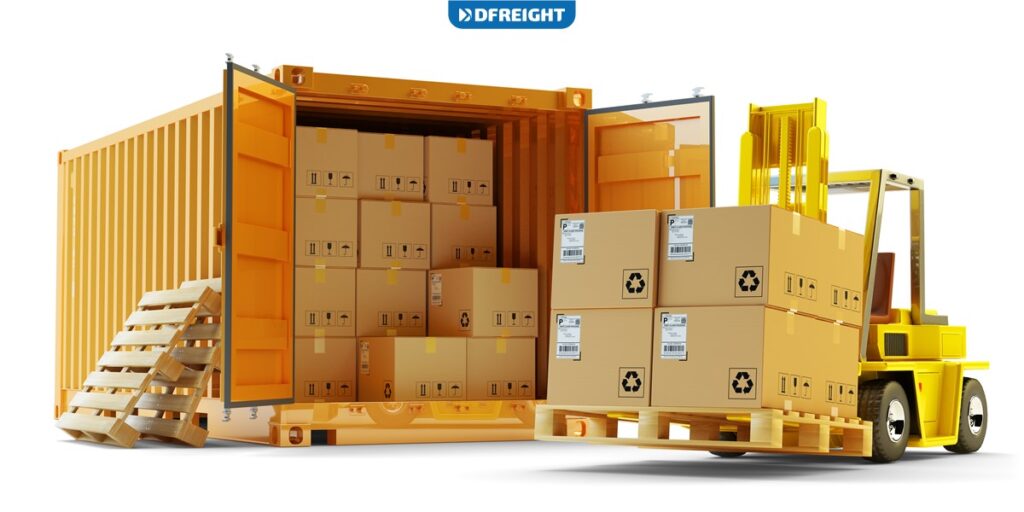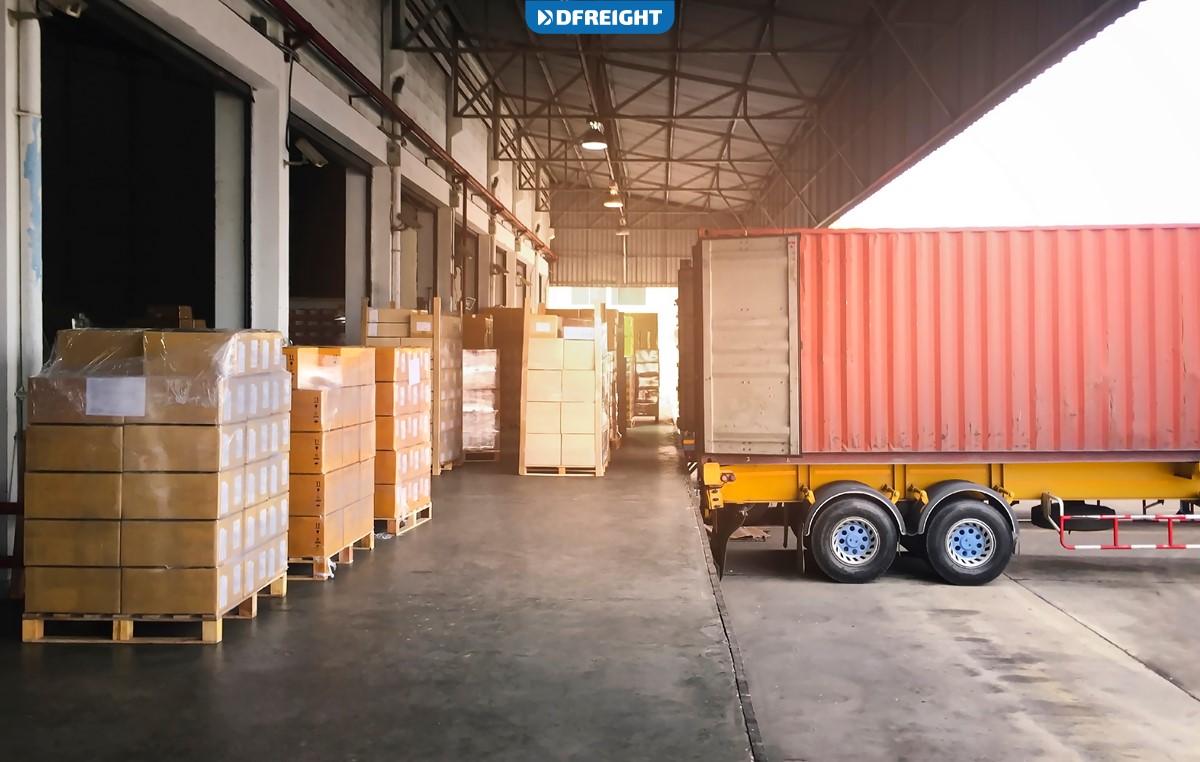Regarding logistics, one of the most important things to consider is how to load containers. This can be challenging, especially if you’re new to the process. There are a few things to keep in mind when loading a container, and if you follow these tips, you’ll be sure to have a smooth and successful process because A well-loaded container can make all the difference in efficiency and cost-effectiveness.
This blog post will show you how to load a container properly, step by step, and give critical tips you need to know. By following these simple tips, you can ensure that your containers are loaded correctly and safely.
Table of Contents
Introduction
A container is a standard-sized rectangular box used to transport goods by ship, train, or plane. Cargo is loaded into the container at the port of origin and unloaded at the destination port. There are different containers, each designed for a specific type of cargo, for example, refrigerated containers for perishable goods and containers with special ventilation for livestock.
The process of loading and unloading containers is known as containerization. Containerization is a crucial part of the logistics process, as it allows for the efficient transport of goods worldwide.
8 Steps for Loading a Container
- Choose the right size container for your needs.
- Find a level spot to place the container.
- Place the container on the spot and ensure it is level.
- Fill the container with your belongings.
- Close the container doors and make sure they are secure.
- Pick up the container and place it on the truck.
- Secure the container on the truck.
- Drive to your destination and unload the container.
The Different Types of Loading a Container
There are four types of loading a container in logistics:
- Front-loading containers: These containers are loaded from the front and are typically used for smaller items.
- Rear-loading containers: These are loaded from the rear and are typically used for more oversized items.
- Top-loading containers: These containers are loaded from the top and are typically used for fragile items.
- Bottom-loading containers: These containers are loaded from the bottom and are typically used for heavy items.

How to Secure a Load in a Container?
In order to secure a load in a container, you will need to use various methods, depending on the type and size of the load. You can use straps, ratchet tie-downs, or rope to secure the load for smaller loads. You will need to use chains, cables, or winches for larger loads.
Sealing a Container
In order to seal a container, you will need to have a few things on hand. First, you will need a container that is the appropriate size for the number of goods you are shipping. Next, you will need a seal that is the correct size for the container. Finally, you will need a way to secure the container’s seal. There are a few different ways to seal a container.
The most common way is to use a seal with a metal clip that can be secured to the container. Another way is to use a seal that has a plastic or metal ring that can be threaded through the container’s closure. Once you have all of the necessary materials, you will need to follow these steps:
- Place the seal on the container.
- Make sure the seal is the correct size for the container.
- Secure the seal to the container.
- Close the container.
- Inspect the container to make sure that the seal is secure.
- Repeat these steps for each container that you are sealing.
Time of Loading a Container
The time it takes for loading a container depends on the cargo type, the loading method, and the available equipment. For example, it takes less time for loading a container with loose cargo than it does for loading a container with packed cargo. And it takes less time for loading a container with packed cargo if it is loaded with a crane than if it is loaded with a forklift.
It generally takes about two hours to load a 20-foot container with loose cargo and about four hours to load a 40-foot container with loose cargo. It takes about four hours to load a 20-foot container with packed cargo and about eight hours to load a 40-foot container with packed cargo. And it takes about six hours to load a 20-foot container with a packed shipment using a crane and about twelve hours to load a 40-foot container with packed cargo utilizing a crane.
Weight of Loading a Container
The weight of the container and its contents are essential factors to consider when shipping goods by sea. The total weight of the shipment must not exceed the maximum payload for the vessel that it is being shipped on, and the container must be able to be safely lifted by the ship’s crane. The weight of the goods being shipped will also affect the shipping cost, as heavier shipments will require more fuel to move them. It is essential to accurately estimate the weight of the goods before booking a shipment, as overloading a container can result in significant fines.
Capacity of Loading a Container
A container’s capacity is measured in TEU or twenty-foot equivalent units. The most common container is the twenty-foot (6.1 m) long container, but forty-foot (12.2 m) and forty-foot (11.8 m) containers are also used. Forty-foot (12.2 m) containers are called “high cubes” because they are one foot (0.30 m) taller than a standard twenty-foot (6.1 m) container. A forty-foot (11.8 m) container is called a “wide” container because it is one foot (0.30 m) wider than a standard twenty-foot (6.1 m) container.
Cargo Packing for Loading in a Container
There are many factors to consider when packing the cargo for loading into a container in logistics. The type of cargo, the size and weight of the shipment, the cargo’s destination, and the delivery time frame need to be taken into account. In addition, the container itself must be appropriately prepared for loading. Cargo must be properly secured inside the container to prevent shifting during transit. This can be done with straps, dunnage, or other methods.
The cargo must also be arranged to maximize space and avoid damage. Once the cargo is loaded, the container must be sealed and labeled correctly. The seal ensures that the contents of the container cannot be tampered with during transit. The label provides information about the contents of the container, the destination, and the sender.

Conclusion
In the world of logistics, loading a container is a vital part of the process. Without proper loading, containers can be damaged and lost, which can cause delays and other problems.
DFreight is a company that specializes in loading a container. We have the experience and expertise to ensure that your containers are loaded correctly so that you can avoid any delays or problems. We invite you to work with us if you’re looking for a company to handle your container loading and unloading. We’re confident that you’ll be satisfied with our service.
FAQs
What are the different types of containers?
There are several types of containers, including dry cargo containers, refrigerated containers, and tank containers.
How are containers unloaded from ships?
Containers are unloaded from ships using a system of cranes and gantry systems. First, the containers are lifted off the ship using a gantry system. Then, they are placed on the dock using a crane.
What are the benefits of using a container for shipping goods?
There are many benefits of using a container for shipping goods, including:
-They are cost-effective
-They are faster and more efficient than traditional methods of shipping
-They offer more protection for the goods being shipped
-They are more secure than traditional methods of shipping
Can cargo loading services accommodate time-sensitive or urgent shipment requests?
Yes, cargo loading services can accommodate time-sensitive or urgent shipment requests, prioritizing them within their operations for expedited handling and delivery.













